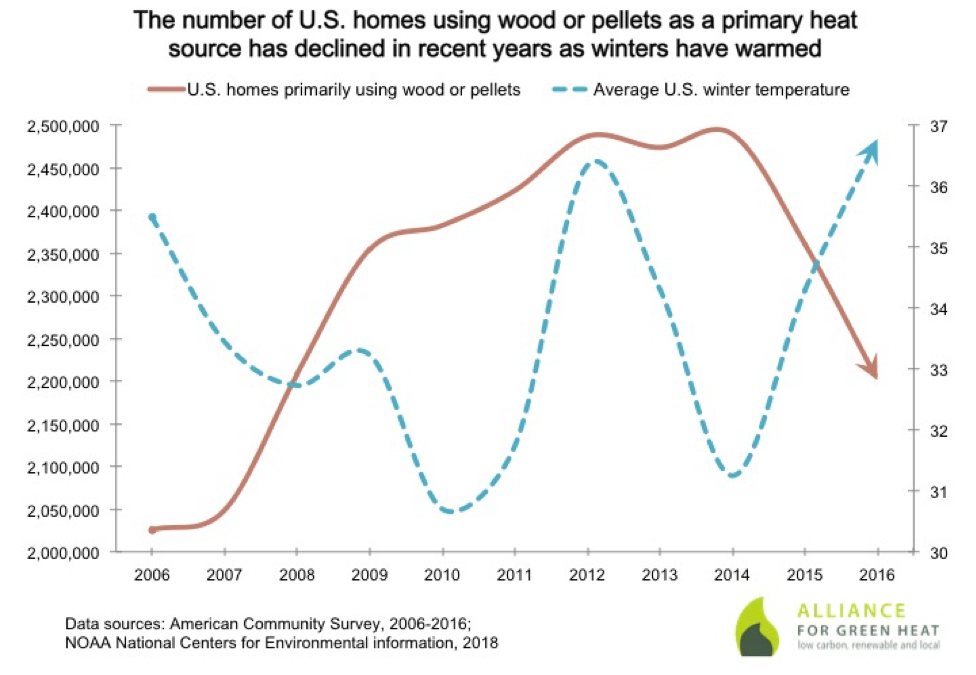For decades starting in the Great Depression the use of wood as a heating source in the U.S. declined as it was replaced by coal, oil and electricity. But in the first years of this century wood made a little comeback, fueled (ha!) in part by wood pellet technology, which turns wood into a fuel source that can be automatically fed into a burner as controlled by a thermostat.
But that rise seems to have stalled or even reversed, reports the Alliance for Green Heat on its blog.
According to the newest American Community Survey, around 2.2 million homes of U.S. homes primarily heated with wood and pellets in 2016—a nearly 12% decline from 2014 and a 9.4% drop from 2011.
What’s the cause? Other technologies and changing weather.
Electric heat pumps and solar thermal systems are on the rise. American Community Survey results show that U.S. electric heating rose 10.4% between 2011 and 2016, with the largest increases occurring in Utah (+48%), Maine (+36%), Nebraska (+30%), and Vermont (+30%). About 39% of U.S. homes used electricity as a primary heating source in 2016, making it the second-most common source behind utility gas, which is used in nearly half of U.S. homes.
Warmer winters likely contribute to a longer-term decline in wood and pellet stove sales.
I have a pellet stove in my living room and while our house is still heating by oil-fired forced hot air, the pellet stove runs much of the winter and greatly cuts into our oil use. I’m not alone in this configuration, it seems:
Tthis is complicated by the enduring popularity of wood and pellets as a supplementary heating source. The newest Residential Energy Consumption Survey by the EIA estimates that an additional 9.3 million U.S. households used wood as a secondary heat source in 2015.


 Return to the Concord Monitor
Return to the Concord Monitor
Warmer winters likely contribute to a longer-term decline in wood and pellet stove sales.
Wood pellet fuel
A completely different prospective, 15yr’s with the objective to lower heating price/ btu.
The US wood pellet fuel market is saturated with subpar fuel.
Year on year poor quality fuels plague homeowners (junk fuel), causing frequent shut downs, cleaning and servicing the stove which (takes the fun right out of it) significantly impacting the overall cost of operation as well as becoming a serious nuisance.
One alternative was to purchase prohibitively expensive wood pellet fuel and here we come full circle, is it worth the price compared with hands free fuel?
My conclusion is a resounding, “NO”!
Interpret the data as you like, with your eyes wide shut,
The US wood pellet industry is 100% responsible for loosing customers!